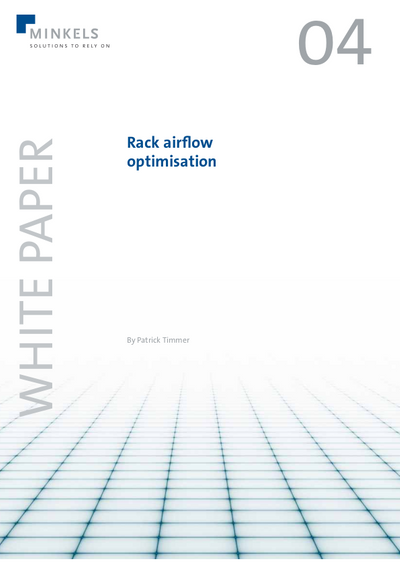Rack airflow optimisation
Today's Data Centres have become progressively more efficient. New insights and developments in the field of power electronics and cooling have driven down the energy consumption. Data Centre owners with low PUE numbers need to be increasingly more creative to further improve the energy efficiency. What methods can we employ to achieve this? Far too often the simple measures are overlooked, forgotten or assumed common knowledge. It is clear despite the use of energy efficient cooling solutions there is still considerable potential for further improvements to be made. Air bypass and recirculation is such a topic that is easily overlooked or taken for granted. This paper shows that reinventing some of the most primary assets of the Data Centre, namely the rack and it's 19" accessories, still pays off. The Cold Corridor® was launched in 2006 by Minkels and provided an efficient solution to prevent the large scale mixing of hot and cold air. Despite the improvements, daily practises have revealed that in many situations temperatures inside corridors are not maintained constant enough. A large temperature difference between the air leaving the cooling equipment and entering the IT-equipment has persisted. This could only be the result of hot and cold air mixing. Tuning the cooling units sometimes only made things worse. This stability issue combined with advancing demands on improving energy efficiency have been the main drivers for taking a closer look at the airflows inside Data Centres and specifically within the 19" racks. A quick first analysis indicated that the locations where air leakage can occur in a traditional raised floor Data Centre are the area around the CRAC, the floor cutouts, and the air bypass and recirculation inside the 19" rack and to a smaller extent the Cold Corridor. In order to identify where major leakages occur a set of air management metrics has been derived and setup in such a way that these inefficiencies in air management can be identified by knowing only the average temperatures at six locations in your Data Centre. To quantify the air-tightness and get a sense of potential improvements a standard rack of 800 x 1000 x 2200 mm and several 19" accessories have been tested for air-leakage. The results are remarkable and have led to the development of an air-tight server cabinet and 19"accessories. Comparison tests showed that air-tightness in the new cabinet is improved by 86% and the new accessories improve the air-tightness by up to 70%. By means of calculation example, based on a Case Study, the use of air management metrics is illustrated combined with a savings potential calculation. This shows that a small Data Centre of 100 m2 , with a heat load of 19,9 kW and an over-dimensioned cooling installation can save € 49 per kW per year by applying the newly designed rack and 19"accessories.




